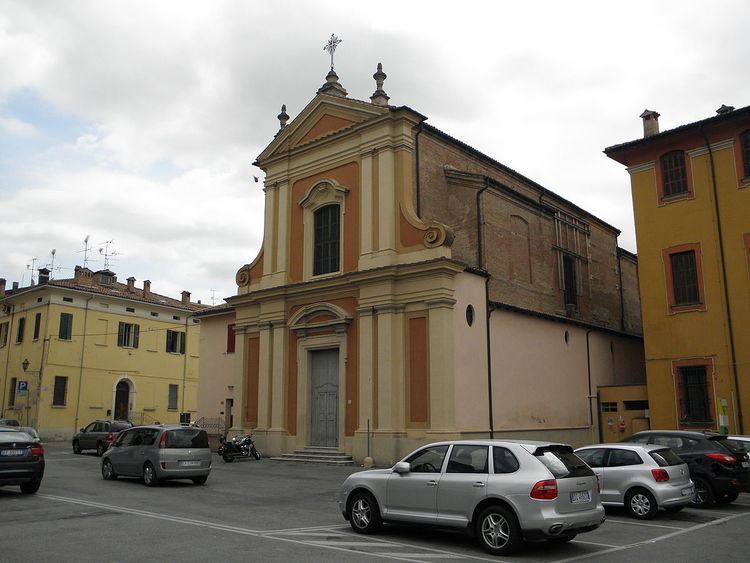Name Alfonso Torreggiani | Role Architect | |
 | ||
Structures Palazzo Aldrovandi, Bologna | ||
Bologna Basilica di S. Domenico - coro ligneo dell'abside di Torreggiani - renaissance masterpiece
Alfonso Torreggiani (1682–1764) was an Italian architect of the Rococo period, principally associated with Bologna.
Contents
- Bologna Basilica di S Domenico coro ligneo dellabside di Torreggiani renaissance masterpiece
- Life
- References
Life
Torregiano was born in Budrio. An apprentice of Giuseppe Antonio Torri, he became intensely active in the city of Bologna working on the design of churches and private buildings and as a consultant on the organisation and reconstruction of existing buildings: for example, the Church of Sant'Ignazio, 1726; the interior of the Church of La Maddalena, 1735; the Palazzo Torfanini (then property of the Princes of Este) in the Via Galliera, 1735; continued the construction of the Palazzo Aldrovandi in 1741, the west front of the cathedral, 1744–52, and the high altar in the Basilica of San Domenico.
Torreggiani was named prince of the Accademia Clementina, and had the patronage of Cardinale Pompeo Aldrovandi and Pope Benedict XIV (Lambertini). For the former he completed a Chapel in the Basilica of San Petronio. Among his main collaborators in Bologna were the painter Vittorio Bigari (1692-1776) and the sculptor Angelo Pio (1690-1770).
His principal clients, besides the nobility and the rising bourgeoisie, were the Bolognese Curia and the Society of Jesus, for whom he built the Novitiate of Sant'Ignazio, now the Pinacoteca Nazionale, of which the Church of Sant' Ignazio (above) was originally part. In addition, the Jesuits of Mantua entrusted to Torreggiani the project of the Palazzo degli Studi (1763). Also in Mantua, from 1756, he planned the new Palazzo Cavriani which was built after the collapse of the earlier residence of the ancient Mantuan family. He also designed the Jesuit College in Rimini, now the City Museum.
